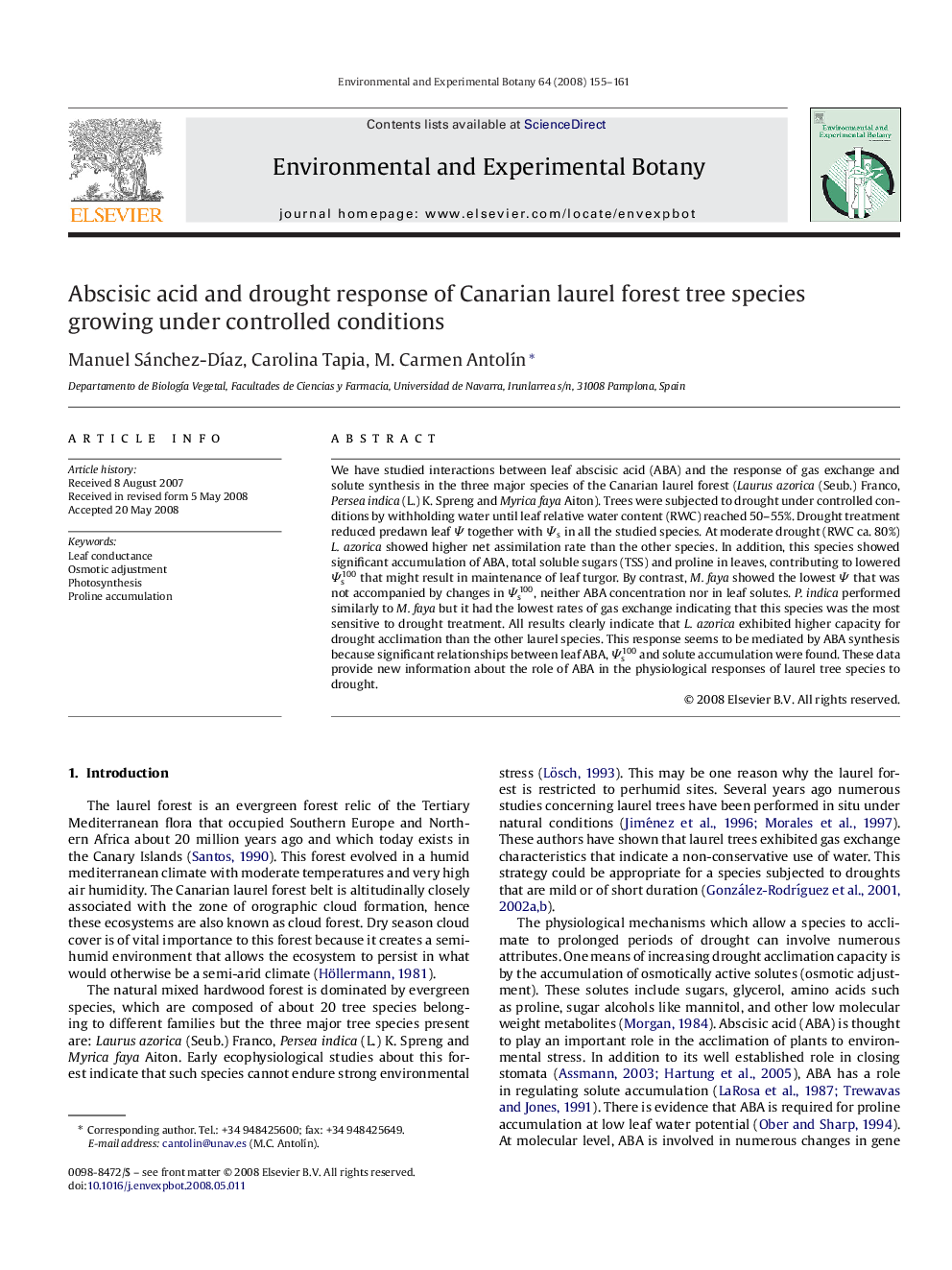| Article ID | Journal | Published Year | Pages | File Type |
|---|---|---|---|---|
| 4555394 | Environmental and Experimental Botany | 2008 | 7 Pages |
We have studied interactions between leaf abscisic acid (ABA) and the response of gas exchange and solute synthesis in the three major species of the Canarian laurel forest (Laurus azorica (Seub.) Franco, Persea indica (L.) K. Spreng and Myrica faya Aiton). Trees were subjected to drought under controlled conditions by withholding water until leaf relative water content (RWC) reached 50–55%. Drought treatment reduced predawn leaf Ψ together with Ψs in all the studied species. At moderate drought (RWC ca. 80%) L. azorica showed higher net assimilation rate than the other species. In addition, this species showed significant accumulation of ABA, total soluble sugars (TSS) and proline in leaves, contributing to lowered Ψs100 that might result in maintenance of leaf turgor. By contrast, M. faya showed the lowest Ψ that was not accompanied by changes in Ψs100, neither ABA concentration nor in leaf solutes. P. indica performed similarly to M. faya but it had the lowest rates of gas exchange indicating that this species was the most sensitive to drought treatment. All results clearly indicate that L. azorica exhibited higher capacity for drought acclimation than the other laurel species. This response seems to be mediated by ABA synthesis because significant relationships between leaf ABA, Ψs100 and solute accumulation were found. These data provide new information about the role of ABA in the physiological responses of laurel tree species to drought.
